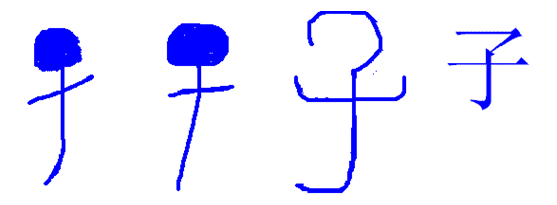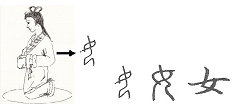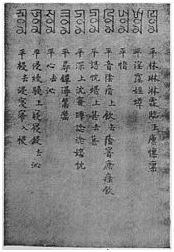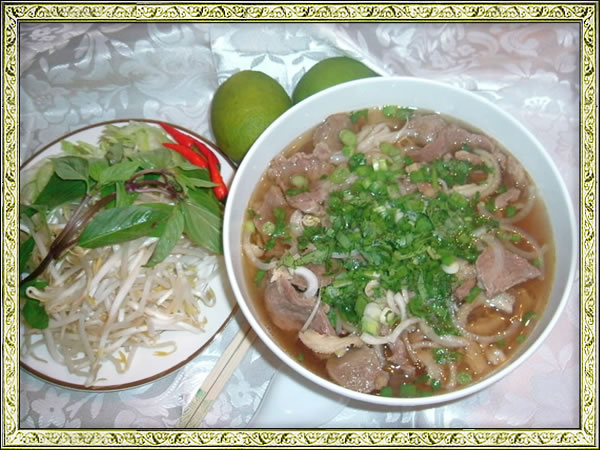Konglish
Two Korean friends are talking:
A: Gosh, I have an important exam tomorrow. So nervous!!
B: Jincha (Really)? Fighting!!
What do you mean by “fighting”? If you have watched any Korean dramas, you would know that what “Fighting” really means in Korean. It means “Cheer up”.
Because of such a prevalence of English in modern Korean culture and society, Korean people often use English words and end up code-switching without even realizing it. This is often referred to as “konglish” which are words adapted from English in ways that may seem strange to native English speakers. The words, having initially been taken from the English language, are either actual English words in Korean context, like 모터사이클 (motorcycle), or are made from a combination of Korean and/or English words (such as Officetel 오피스텔 Office + Hotel) which are not used in English-speaking countries. It can be considered a sublanguage, and common sentence structure or vocabulary mistakes made by Koreans have also been referred to as Konglish. ‘Sharp 샤프: mechanical pencil’ ‘Handphone 핸드폰: mobile phone’ ‘Skin 스킨: toner’ are very common examples of Konglish.
Learning Chinese Characters through China’s history and culture
I often hear students say that Chinese characters seem to be overwhelming because they are so varied and some of them contain “numerous” stokes. As most learning requires effective ways, learning Chinese characters has its unique way as well.
Besides the pictographic characteristics of Chinese characters (as clarified in “Chinese characters as a form of visual art”), some Chinese characters also indicate the history and culture aspect of China. If you are learning Chinese characters through the stories about Chinese culture and history, it would make the learning more interesting and rewarding. Let’s have a look at the following examples.
The character “子” is a pictographic character (see picture 2.1.). In ancient times, the character “ ” means “children” when it is a radical of a character or “son” when it is a character by itself. The character looks like a baby with a big head while holding up two hands. The character has developed over the time but its modern version still holds some pictographic characteristics.
” means “children” when it is a radical of a character or “son” when it is a character by itself. The character looks like a baby with a big head while holding up two hands. The character has developed over the time but its modern version still holds some pictographic characteristics.

Picture 2.1. the development of Chinese character “子”
The character “女” is more than a pictographic Chinese character (see picture 2.2.). The original version of the Chinese character “女” (meaning female) looks like a lady with both her legs kneeled down. It was created to mean that women in ancient China usually stay at home waiting for either her father (before marriage) or her husband (after marriage) to come back.
This character “ ” (meaning female) also looks like a servant because of its unique posture. This indicates that ancient China is a male-dominate society and women are subordinate to males. In ancient times, Chinese women neither go for work nor go to schools, and the most important work for them is to take care of their husbands and children. In modern times, Chinese women not only receive higher education but also go for work, but they still regard family lives as the most important things in their lives.
” (meaning female) also looks like a servant because of its unique posture. This indicates that ancient China is a male-dominate society and women are subordinate to males. In ancient times, Chinese women neither go for work nor go to schools, and the most important work for them is to take care of their husbands and children. In modern times, Chinese women not only receive higher education but also go for work, but they still regard family lives as the most important things in their lives.

Picture 2.2. the development of Chinese character “女”
When we combine the above two characters (女+子,see picture 2.2. and picture 2.1.) together, we will have the character “好” (Hǎo, meaning “good” ). The character “好” is created with the meaning that it is a good thing when a woman has a child. It indicates that Chinese people pay significant attention of having offspring. There is a Chinese saying goes like this; there are three forms of unfilial conduct of which the worst is to have no descendants.
Anne Ma
Mandarin Language Consultant
Some stories about our Japanese Courses
Hi everyone, 皆さん、今日は。
Our Beginners 1 and Beginners 2 had the written (and writing) tests in their final week of the courses. The majority of the students prepared and responded well. Especially the results of the latter group were all pleasing or excellent. As for other class activities, apart from those with the regular textbooks and CDs, I showed episodes from the long series of “Japanese for Beginners” in most of the lessons with a bit of revision. The topics were: asking for directions, obtaining what you want in shopping, introducing yourself, asking time, etc. Each episode was useful, effective, intelligent, cultural and fun to watch.
In the JLPT N2, apart from working with the books/exercises of the Test, we read, comprehended and commented for some intelligent or informative articles from Japanese newspapers. One was an article of an executive of Misawa Homes Co. Ltd (Asahi newspaper, 17.9.11) about the importance of teaching (his) children to be creative, self sufficient, independent by developing survival skills that esp. for domestic needs, e.g. cooking, fixing bikes, sowing. He wants teach for/as his value since his father had taught him in his childhood.
Other article (Asahi newspaper, 17.9), which I showed to other classes too, reported about Japanese multi-nationals’ new economic activities around the world. The reporter wrote the article at International Motor Show in Germany. Three Japanese multi-nationals that produce textile and industrial fibers (as part of their products), i.e. Tore, Teijin and Mitsubishi-reiyon, are taking the top three in the global market for the production of fiber carbon being used for transport related industries (i.e. automobiles and aircrafts in particular). Their total share takes one forth of the world’s market. Companies that use the above carbon fiber include BMW, VW, US airlines, French Airbus and German Daimler. According to the report, use of carbon fiber greatly reduces the weight of vehicles/aircrafts, energy needed (fuel, electricity etc) and costs/time compared to past practices and carbon fiber is 10 times tougher than steel for such use.
For practice of speaking telephone numbers etc, I used the big advertisement page (Asahi newspaper) of a movie “1911” played by Jackie Chan that was shown at many major cinemas around Japan.
Also, I showed the big advertisement page of “Kiite tanoshimu Nihon no Meisaku” (Asahi newspaper, 11.9). (Company: U-CAN, Tokyo) It talks and shows about 16 CDs of narratives of well known works of many Japanese classical and highly known novelists and poets. The dates of those go back to 1887, including Soseki Natsume, Higuchi ichiyo. Narrated by 10 experts.
When our Beginners 2 and Pre-Intermediate 1 started, I introduced Japanese traditional “matcha” (kind of beautiful green tea in tea bags) bought at an Asian food shop and gave a tea bag to each student for their later drinking at home. Also, I showed/informed about Japanese curry paste with a package, i.e the way to make Japanese curry & rice in a nutritious way with a great taste. And I showed the wrapping part of Japanese “natto” package (natto = brown fermented beans) and introduced my recipe that is mixing “natto” with salad (very healthy and refreshing) with a lot of salad, e.g. white radish, alfalfa, lettuce, raw egg and soy sauce. (Usually, in the past, there was/were student(s) in my classes who went to buy esp. curry paste and tried making curry paste after hearing my talk of the above! They liked the food they made/had.)
5.11.11
Japanese Teacher, Toshiko Jackson
Is it difficult to learn Indonesian?
Bahasa Indonesia literally means the language (bahasa) of Indonesia. Indonesia is one of the developing countries with significant economic growth. This makes the country attracts a lot of investors from all over the world to come and to set up businesses. However, some of them find it hard to communicate with the locals and hence need to learn the language.
Is it difficult to learn Indonesian?
Well, there are a few reasons why Bahasa Indonesia is not difficult to learn:
1. The language use Roman alphabet (a, b, c, ….), unlike Korean, Japanese, Mandarin, Arabic which require us to memorize different form of words and symbols.
2. Some of Indonesian vocabularies are derived from Sanskrit, Dutch, English, Portuguese and even Mandarin so you might find it familiar to you.
3. Bahasa Indonesia is not a tonal language like Mandarin or Vietnamese.
4. There is no tenses in Bahasa Indonesia.
So, why not try to learn Indonesian? I am sure you will not find it too hard!
— Tirto
Part A Reading: From impossibly hard to naturally easy


Do you find the Part A OET reading task too hard? You probably don’t have a good system for approaching the test.
This task can seem impossible. You have 15 minutes to read four texts and then answer more than 20 questions. And you have to get the grammar correct too!
I once had a student who had below than average spoken English, and she had a lot of trouble with the writing task too. However, unlike the rest of the class, she found Part A to be naturally easy. Even though English was her second language, she could finish any Part A task I threw at her with minutes to spare. Why was she so good at it?
This was because she had a systematic approach to handling the test – and to do well in the test, you will need to internalize this approach so that it becomes automatic. How do you do this?
Step 1:
Do not read the entire texts! You need to rapidlyscan and skim for certain details that will help you characterize each of the four texts so that you know where to find you answer.
These details include things like:
- Headings
- Author
- Year
- Location
Now you need to quickly give a unique personality to each of the texts so that you can remember which one is which. For example: “Text 1: Spanish study from 1999; Text 2: Statistics from 2005; Text 3: Study by O’Neill et al.; Text 4: Australian Guidelines for approaching asthma”.
Step 2:
Now keywords in the gap-fill will tell you immediately which text you need to find your answer from. The first sentence might read: “Asthma is a common condition. In Spain, _____________ of people suffer from asthma.”Which text are you going to get your answer from?
For more tips on how to develop your systematic approach, feel free to contact any of the teachers at SLS – and don’t forget, practice makes perfect!
Jaime
Old Mandarin

After the fall of the Northern Song dynasty, northern China was under the control of the Jin (Jurchen) and Yuan (Mongol) dynasties. During this period, a new common speech developed, based on the dialects of the North China Plain around the capital, a language referred to as Old Mandarin. New genres of vernacular literature were based on this language, including verse, drama and story forms.
The rhyming conventions of the new verse were codified in a rhyme dictionary called the Zhongyuan Yinyun (1324). A radical departure from the rhyme table tradition that had evolved over the previous centuries, this dictionary contains a wealth of information on the phonology of Old Mandarin. Further sources are the ‘Phags-pa script based on the Tibetan alphabet, which was used to write several of the languages of the Mongol empire, including Chinese, and the Menggu Ziyun, a rhyme dictionary based on ‘Phags-pa. The rhyme books differ in some details, but overall show many of the features characteristic of modern Mandarin dialects, such as the reduction and disappearance of final stop consonants and the reorganization of the Middle Chinese tones.
Classifiers in Vietnamese Language
Classifiers are considered to be one of the most complicated parts of speech in learning Vietnamese language. In a sentence, classifier functions as a noun when it is followed by another noun.
In English we say one pen, two pens, three pens, etc. However, bút in Vietnamese must be accompanied by the classifier cây. Therefore, a pencil in English is một cây bút in Vietnamese. Never do people say một bút, hai bút, but một cây bút, hai cây bút … Similarly, listed below are 3 useful classifiers which are commonly used.
Cái ‘item’ has become one of the most common classifiers for daily life things such as: cái bàn ‘table’, cái chén ‘small bowl’, cái giuờng ‘bed’, cái cửa sổ ‘window’, cái gương ‘mirror’.
Con ‘child’ is a classifier which indicated a single creature such as con chó ‘dog’, con bướm ‘butterfly’, con dao ‘knife’, con sông ‘river’
Bó ‘bunch’, several common terms are bó hoa ‘bunch of flowers’, bó rau muống ‘bunch of morning glory’ and bó lúa ‘bundle of rice’.
Want to Learn Vietnamese? Then You MUST Read This…
Learning a new language can be fun and time-consuming and Vietnamese is no exception. As a Vietnamese teacher, I can understand the difficulty students have to overcome and I am happy to give you some tips to master this very interesting language.
1. Create a schedule to practice Vietnamese for at least 30 minutes per day. As a saying goes, ‘Practice makes perfect’, practice diligently daily will help you become a fluent Vietnamese speaker.
2. Get involved with the Vietnamese community surrounding your living area such as Vietnamese restaurant, grocery store and cultural festival. This will be extremely useful in learning Vietnamese culture and finding people to speak Vietnamese to.
3. Listening to Vietnamese songs and watching movies are good ways to familiarize yourself with pronunciation. Thinking how surprise your friends will be if you can sing a Vietnamese song on some special occasion!
4. Travel to Vietnam. This might be the hardest way but spending time in Vietnam is considered to be the quickest way to learn the language. When you are put in a situation where you have to speak the language to communicate, you can fasten your learning speed tremendously.
– Jenny Lee (Vietnamese Language Consultant)
Phở

I am Jenny and I am currently teaching Vietnamese at Sydney Languages Solutions. I will introduce to you one of my favorite Vietnamese foods – Phở
Phở is one of the most popular Vietnamese dishes. It origin was in the early 20th century in Nam Dinh, a province in southwest of Hanoi. Enjoying a bowl of hot Phở whenever hungry is kind of pleasure.
Phở’s recipe may vary amongst different regions, but commonly the main ingredients include white rice noodle, broth (made by stewing the cows or pigs bones with spices such as cinnamon sticks, coriander pods, cloves star anise and cardamom), and slices of meat (beef, chicken). Typical garnishes for Phở are onions, lime, chili peppers and bean sprouts.
Due to its popularity, Phở can be easily found in many countries such as Australia, America, French, Canada, China, Indonesia…If you have never tried Phở before, why don’t give it a go? I believe you will love it from the first sight!
Is Your Passion Fashion?

I recently read an article on where not to learn Japanese from which started me thinking about language and how it is an ever-changing creature.
The following resources may be useful to help with reading, writing and comprehension, but when it comes to speaking, these following points may be worth considering:
Don’t learn from novels as no-one talks that way.
Don’t learn from scientific journals as no-one talks that way.
Don’t learn from newspapers as no-one talks that way.
Don’t learn from road signs as no-one talks that way.
Don’t learn from advertisements as no-one talks that way.
Don’t learn from phone texting as no-one talks that way.
Don’t learn from manga (comics) as no-one talks that way.
As a native English speaker and mother of young teenagers, it is a constant battle for me to keep up with their ever-changing language. They constantly bring home words that I recognise but with meanings that are completely new to me.
It may be the answer for students of a new language – learn from the youth of today as the words they use now will be in the dictionaries tomorrow, and everyone will talk that way!
By Vicki



Latest Comments